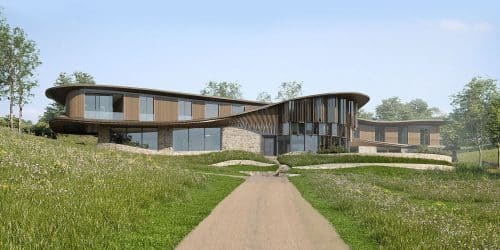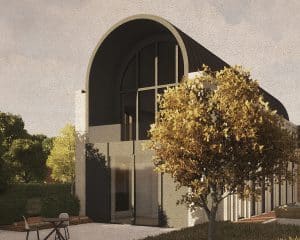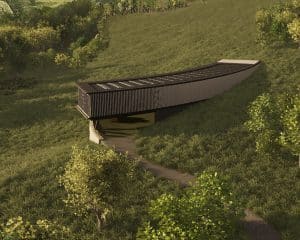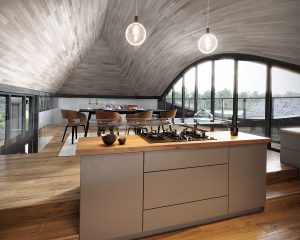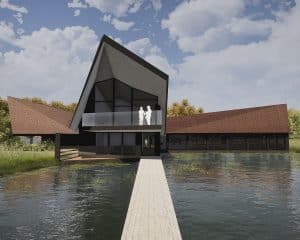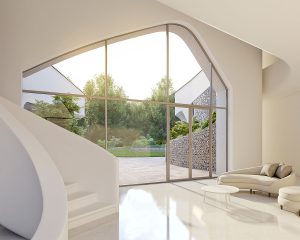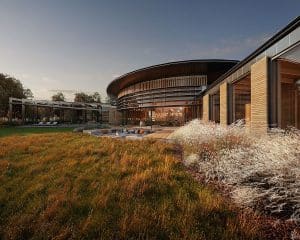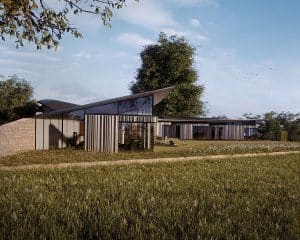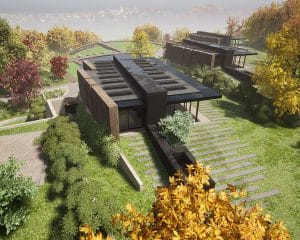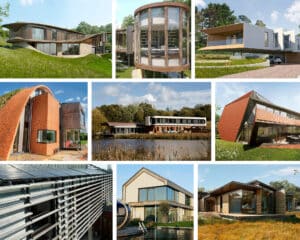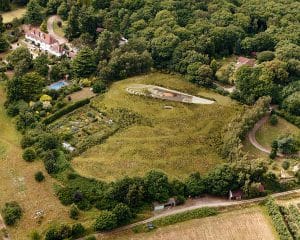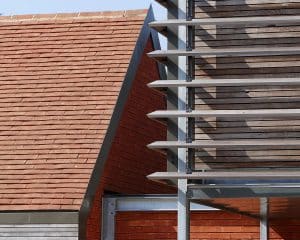Planning Policy
What is Paragraph 84?
The term ‘Paragraph 84′, formerly Paragraph 80, Para 79, para 55 and prior to this PPS 7’ refers to the aspirational national planning policy, first established in 1997, which sets out various circumstances which can enable the erection of new isolated dwellings in the open countryside. The ‘Paragraph 84e’ policy is a response to the reality that, despite the drive to improve the design quality of new housing, generally new housing continues to be very ordinary and with very poor environmental consideration.
We have to date achieved consent for 32 paragraph 84 houses of exceptional quality in various locations across the country. Thus far 18 of these have been built,10 have been within Areas of Outstanding Natural Beauty and two projects have been featured on Grand Designs
The requirements of Para 84 sets a high bar for architects and rightly so. It demands a design approach of the highest quality. As a result, our studio has developed a sensitive and creative approach and our projects undergo a thorough examination at each stage of their development; from inception to planning, through technical design and construction. Inspirational sustainable design is an inevitable consequence of our rigorous approach to each and every stage of a design’s development.
Hawkes Work
Popular Paragraph 84 Projects
Paragraph 84e
Background to NPPF
Prior to 1997 The Planning Act of 1947 had instilled a ‘no new houses in the countryside’ philosophy in planning. In 1997 the then Environment Secretary, John Gummer, revised Planning Policy Guidance 7: Countryside to include the following. PPG 7 Paragraph 3.21 was the first iteration of what we now know as ‘Para 84’.
Paragraph 3.21 stated that new house building in the open countryside should be strictly controlled. It went on to say;
• The fact that a single house on a particular site would be unobtrusive is not by itself a good argument; it could be repeated too often.
• Isolated new houses in the countryside require special justification.
• An isolated new house . . . may . . . be justified if it is clearly of the highest quality, is truly outstanding in terms of its architecture and landscape design, and would significantly enhance its immediate setting and wider surroundings. Proposals for such development would need to demonstrate that proper account had been taken of the defining characteristics of the local area.
• The opportunity to add to the tradition of the ‘Country House’ It was this policy which coined the term.
• The ‘Country House’ clause which also became known as ‘Gummer’s Law’. Significantly, this established an aspirational objective rather than the usual policies of constraint.
The roots of paragraph 84 are clearly visible from the origin of this great policy.
The Labour government subsequently lobbied to remove this clause due to it seeming to unduly favour the wealthy elite. Instead the wording of the policy was altered in 2004 in the issuing of Planning Policy Statement 7: Sustainable Development in Rural Areas. Where PPG 7 was planning ‘guidance’, PPS 7 became planning ‘policy’. At paragraph 10 of PPS7, the guidance stated that isolated new houses in the countryside would require special justification for planning permission to be granted, whilst at paragraph 11, the guidance went onto say: – Very occasionally, the exceptional quality and innovative nature of the design of a proposed, isolated new house may provide this special justification for granting planning permission.
Such a design should be truly outstanding and ground-breaking, for example, in its use of materials, methods of construction or its contribution to protecting and enhancing the environment, so helping to raise standards of design more generally in rural areas. The value of such a building will be found in its reflection of the highest standards in contemporary architecture, the significant enhancement of its immediate setting and its sensitivity to the defining characteristics of the local area. In March 2012 the Government issued new national planning guidance in the form of The National Planning Policy Framework (NPPF).
At paragraph 55 the advice to local planning authorities was that they should; ‘avoid new isolated homes in the countryside unless there are special circumstances’. Bullet point 4 of paragraph 55 described the special circumstances which could allow the erection of isolated dwellings in the countryside. The ‘special circumstances’ included at bullet point 4 included; ‘the exceptional quality or innovative nature of the design of the dwelling.’
The policy went on to say that;
‘Such a design should:
• be truly outstanding or innovative, helping to raise the standards of design more generally in rural areas.
• reflect the highest standards in architecture.
• significantly enhance its immediate setting.
• and be sensitive to the defining characteristics of the local area’.
In July 2018 the NPPF was revised and the policy provision was to be found in paragraph 79. Subdivision of an existing residential use was included in a new item (item d) but the exceptional dwelling provision was to be found at item (e) with few alterations from the 2012 edition;
79. Planning policies and decisions should avoid the development of isolated homes in the countryside unless one or more of the following circumstances apply:
e) the design is of exceptional quality, in that it:
• is truly outstanding or innovative, reflecting the highest standards in architecture, and would help to raise standards of design more generally in rural areas; and
• would significantly enhance its immediate setting, and be sensitive to the defining characteristics of the local area.
Interestingly the provisions in paragraph 79 were no longer to be regarded as “special” circumstances but rather just “circumstances”. Other than that the policy remained largely unchanged, except for the tests of the policy being combined into two bullet points where they had previously been spread across four.
In February 2019 the National Planning Policy Framework (NPPF) was revised but Paragraph 79(e) remained unchanged until July 2021 when the National Planning Policy Framework (NPPF) was revised once again and the para 79 “isolated dwellings” policy was retained but moved to paragraph 80;
e) the design is of exceptional quality, in that it:
• is truly outstanding, reflecting the highest standards in architecture, and would help to raise standards of design more generally in rural areas; and
• would significantly enhance its immediate setting, and be sensitive to the defining characteristics of the local area.
The wording in the 2019 version included a very welcome change in that there was now no longer a need to demonstrate “innovation” as a test within the policy.
Since the NPPF was introduced in 2012 the term “innovative” had been included but in practice had caused much confusion among design professionals, planning officers, committee members, design panels and even the Inspectorate.
Whilst previously the policy had required “exceptional” dwellings to be either “truly outstanding” OR “innovative”, paragraph 80(e) removed the confusion / misdirection created by the “or” through removal of the word “innovative”.
Another welcome evolution is the design policy which is found in the NPPF at paragraph 139 (formerly paragraph 131 & 134) now Para 139(b) which now provides “significant weight” for design code compliant development. The previous version had provided “great weight”. A subtle difference but one which only increases the weight to be applied to good design.
In December 2023 the NPPF was once again updated and the policy retained but moved to Paragraph 84. The wording remaining unchanged from the previous Para 80 version.
Whilst there is no doubt that proposals do continue to have to demonstrate that a dwelling proposed under paragraph 84(e) is of exceptional quality, and rightly so, the removal from the policy of some of the more difficult terms in PPS 7 / 11, paragraph 55, 79 and 80 represent a response by Government to encourage and support those proposals that genuinely seek to raise the bar of quality in the design and execution of new dwellings in the countryside.
This year marks the 26th anniversary of this great policy yet many architects and planners continue to struggle to grasp the intricacies and nuance within the tests set within paragraph 84. Through an unparalleled level of experience, passion and commitment to this important facet of national policy, Hawkes Architecture continue to set the bar by which other paragraph 84 proposals are measured.
Contact Richard and his team if you would like to discuss a potential site.
